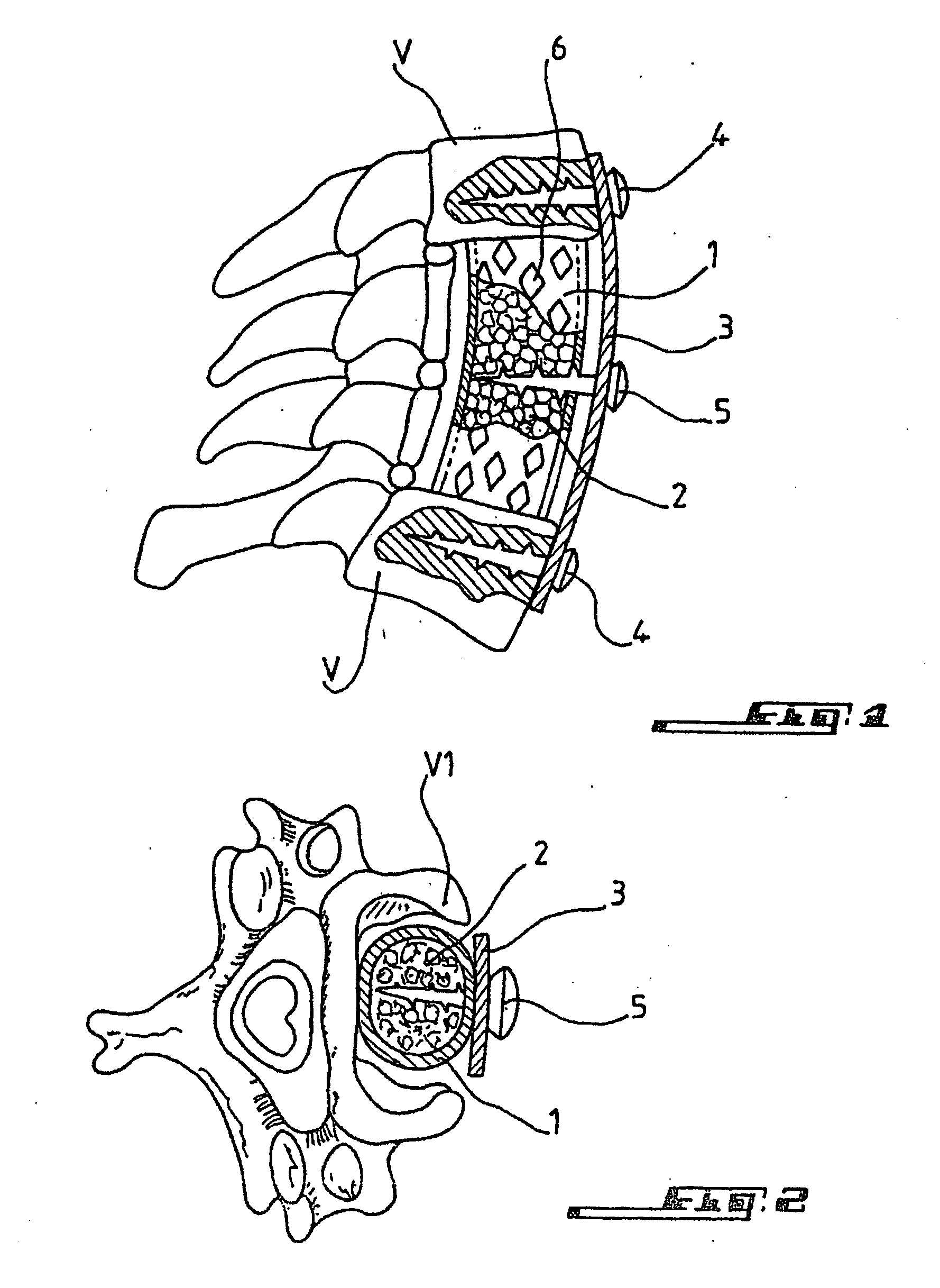Method for repairing bone
a bone and bone technology, applied in the field of bone repair devices, can solve problems such as operative complications, and achieve the effect of good mechanical resistance of the structur
- Summary
- Abstract
- Description
- Claims
- Application Information
AI Technical Summary
Benefits of technology
Problems solved by technology
Method used
Image
Examples
Embodiment Construction
[0018] In the figures, the same reference numbers denote the same parts. In FIG. 1 it can be seen that the implant is formed by a substantially cylindrical tube 1 containing bone grafts 2, which is inserted between two healthy vertebrae V. A plate 3 is applied along the length of tube 1, the plate 3 being screwed into the vertebrae respectively above and below the vertebra which has undergone partial removal of the vertebral body. Plate 3 is held in position by securing screws 4 at its two ends, screws 4 being fixed in the two healthy vertebrae V. The implant is joined to plate 3 by at least one screw 5 which, in the example shown, is central. According to the invention, the wide meshes 6 clear after a certain time to allow growth of the grafts. Vertebral transverse and spinous processes (not referenced) can also be seen in this figure. FIG. 2 is an overhead view of the implant in position within a sectioned vertebral body V1. The medullary canal (not referenced) is schematised in t...
PUM
| Property | Measurement | Unit |
|---|---|---|
| flexible | aaaaa | aaaaa |
| biocompatible | aaaaa | aaaaa |
| shape | aaaaa | aaaaa |
Abstract
Description
Claims
Application Information
 Login to View More
Login to View More - R&D
- Intellectual Property
- Life Sciences
- Materials
- Tech Scout
- Unparalleled Data Quality
- Higher Quality Content
- 60% Fewer Hallucinations
Browse by: Latest US Patents, China's latest patents, Technical Efficacy Thesaurus, Application Domain, Technology Topic, Popular Technical Reports.
© 2025 PatSnap. All rights reserved.Legal|Privacy policy|Modern Slavery Act Transparency Statement|Sitemap|About US| Contact US: help@patsnap.com


